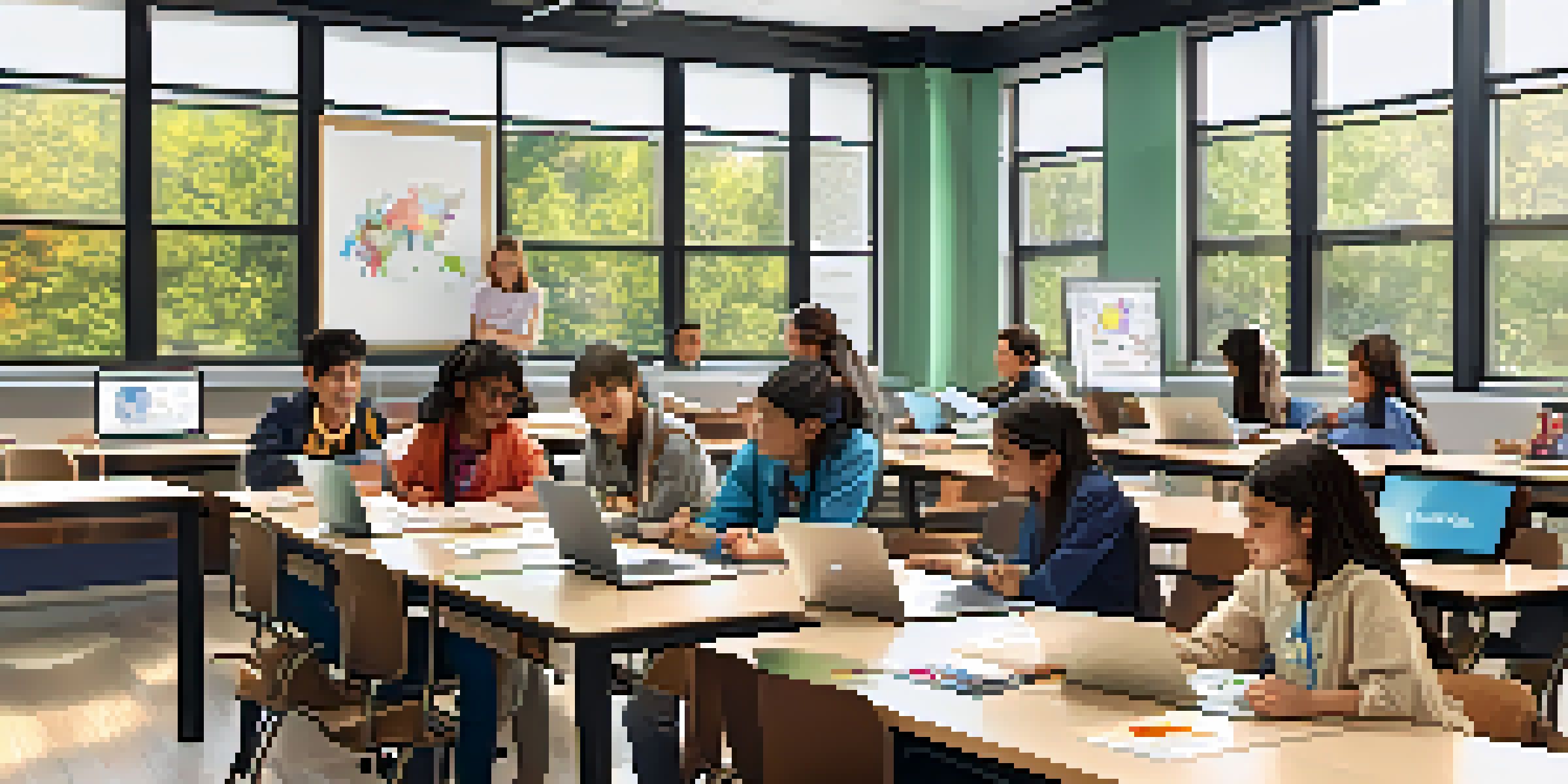Blended Learning in Higher Education: Strategies for Success

Understanding Blended Learning in Higher Education
Blended learning combines traditional classroom methods with online activities, creating a flexible learning environment. This approach allows educators to leverage technology while maintaining personal interaction, providing students with the best of both worlds. For instance, a professor might deliver lectures online and use in-person class time for discussions and hands-on activities. This method not only caters to diverse learning styles but also encourages student engagement in a more dynamic manner.
Benefits of Blended Learning for Students
One of the primary benefits of blended learning is the increased flexibility it offers students. They can access materials at their convenience, which is especially helpful for those balancing work and study. Additionally, blended learning often leads to improved retention rates, as students can revisit online resources whenever they need. This approach fosters a sense of accountability, encouraging learners to take more ownership of their education.
Blended Learning Offers Flexibility
Blended learning allows students to access materials at their convenience, fostering a sense of accountability.
Key Strategies for Implementing Blended Learning
To successfully implement blended learning, institutions need to develop a clear strategy that outlines goals and expectations. Start by assessing the needs of both students and instructors to identify the best tools and resources. Incorporating a mix of synchronous and asynchronous activities can also enhance the learning experience. For example, live Q&A sessions can complement recorded lectures, promoting interaction and immediate feedback.
Choosing the Right Technology Tools
Selecting the right technology tools is crucial for effective blended learning. Platforms like Learning Management Systems (LMS) can streamline course administration and provide a space for resources and assignments. However, it's essential to choose tools that align with your course objectives and are user-friendly for both students and instructors. Engaging multimedia resources, such as videos and interactive quizzes, can significantly enhance the learning experience.
Engaging Content Keeps Students Motivated
Using diverse formats like videos and interactive elements in course content enhances student engagement and learning.
Creating Engaging Course Content
Developing engaging course content is key to keeping students motivated in a blended learning environment. Using a variety of formats, such as videos, podcasts, and interactive simulations, can cater to different learning preferences. Consider incorporating real-world examples and case studies to make the material relatable and applicable. Encouraging student collaboration on projects can further enhance engagement and foster a sense of community.
Assessing Student Performance in Blended Learning
Assessment in a blended learning model should be multifaceted, incorporating both online and in-person components. Regular quizzes and discussion participation can provide valuable insights into student understanding. Additionally, offering formative assessments allows students to receive feedback throughout the course, rather than just at the end. This ongoing evaluation helps identify areas for improvement and supports student growth.
Technology Tools Enhance Learning
Choosing the right technology tools, such as Learning Management Systems, is crucial for effective blended learning implementation.
Ensuring Instructor Preparedness and Support
For blended learning to be successful, instructors must be well-prepared and supported. Providing training on the technology and pedagogical strategies ensures that educators feel confident in their roles. Moreover, fostering a collaborative environment where instructors can share experiences and best practices promotes continuous improvement. Regular check-ins and feedback sessions can help instructors adjust their approaches as needed.
The Future of Blended Learning in Higher Education
As technology continues to evolve, the future of blended learning in higher education looks promising. Institutions are increasingly recognizing the value of this approach in meeting diverse student needs. Innovations such as virtual reality and artificial intelligence could further enhance the blended experience, making learning more immersive and personalized. Ultimately, embracing these changes can lead to more effective teaching and improved student outcomes.